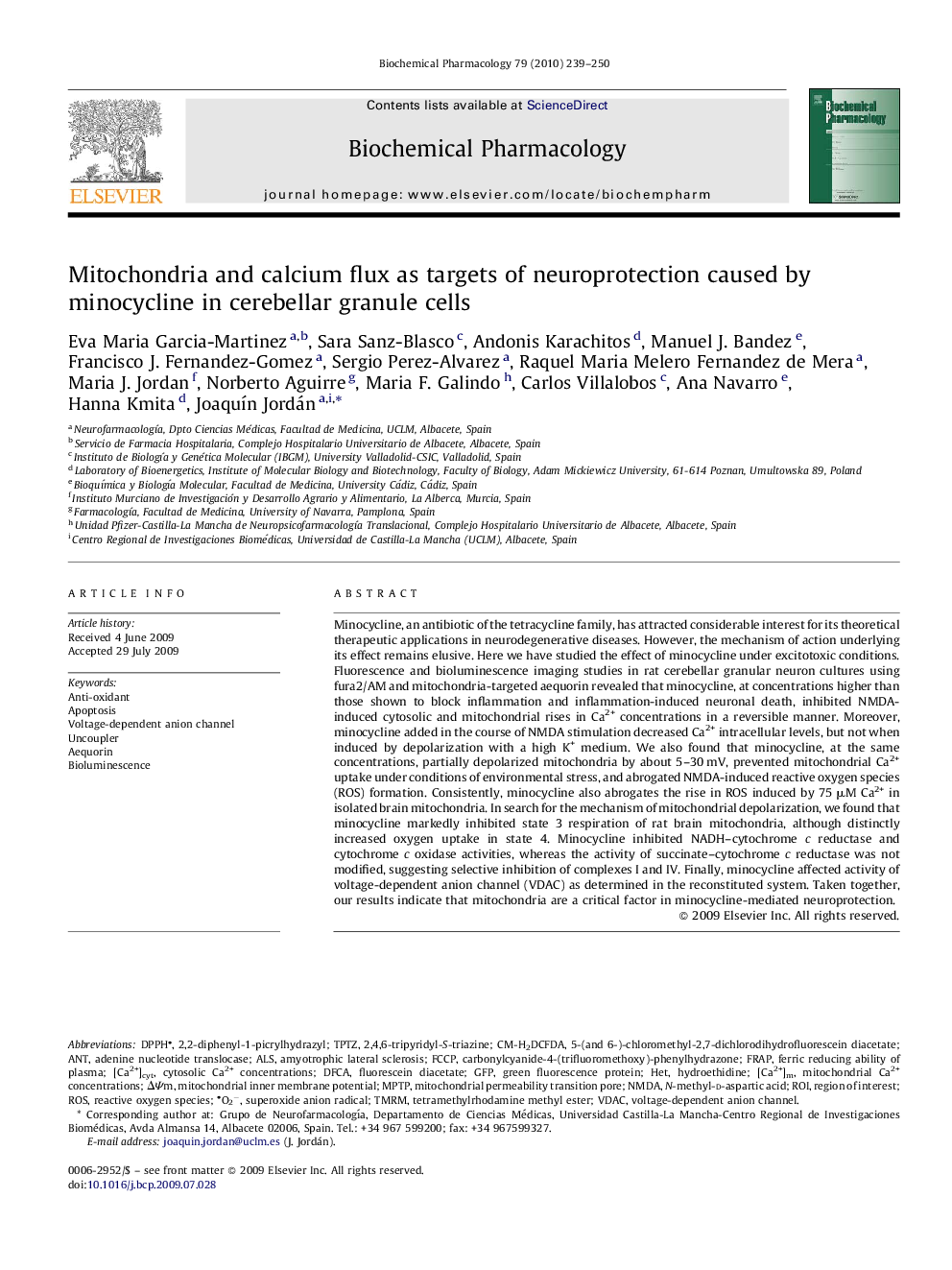| Article ID | Journal | Published Year | Pages | File Type |
|---|---|---|---|---|
| 2513821 | Biochemical Pharmacology | 2010 | 12 Pages |
Minocycline, an antibiotic of the tetracycline family, has attracted considerable interest for its theoretical therapeutic applications in neurodegenerative diseases. However, the mechanism of action underlying its effect remains elusive. Here we have studied the effect of minocycline under excitotoxic conditions. Fluorescence and bioluminescence imaging studies in rat cerebellar granular neuron cultures using fura2/AM and mitochondria-targeted aequorin revealed that minocycline, at concentrations higher than those shown to block inflammation and inflammation-induced neuronal death, inhibited NMDA-induced cytosolic and mitochondrial rises in Ca2+ concentrations in a reversible manner. Moreover, minocycline added in the course of NMDA stimulation decreased Ca2+ intracellular levels, but not when induced by depolarization with a high K+ medium. We also found that minocycline, at the same concentrations, partially depolarized mitochondria by about 5–30 mV, prevented mitochondrial Ca2+ uptake under conditions of environmental stress, and abrogated NMDA-induced reactive oxygen species (ROS) formation. Consistently, minocycline also abrogates the rise in ROS induced by 75 μM Ca2+ in isolated brain mitochondria. In search for the mechanism of mitochondrial depolarization, we found that minocycline markedly inhibited state 3 respiration of rat brain mitochondria, although distinctly increased oxygen uptake in state 4. Minocycline inhibited NADH–cytochrome c reductase and cytochrome c oxidase activities, whereas the activity of succinate–cytochrome c reductase was not modified, suggesting selective inhibition of complexes I and IV. Finally, minocycline affected activity of voltage-dependent anion channel (VDAC) as determined in the reconstituted system. Taken together, our results indicate that mitochondria are a critical factor in minocycline-mediated neuroprotection.
Graphical abstractFigure optionsDownload full-size imageDownload as PowerPoint slide
